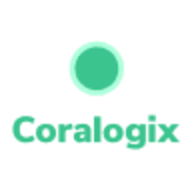

Coralogix offers real-time logging solutions, while Grafana specializes in open-source analytics and monitoring platforms. Based on user feedback, Grafana seems to have the upper hand due to its advanced features and higher perceived value.
Features: Coralogix users report scalability, real-time analytics, and integrated anomaly detection as valuable features. Grafana users value comprehensive dashboard capabilities, extensive plugin availability, and seamless integrations.
Room for Improvement: Coralogix reviewers suggest enhancing user documentation, streamlining the setup process, and improving alerting mechanisms. Grafana users note a need for better alerting mechanisms, improved data visualization options, and refining setup complexity.
Ease of Deployment and Customer Service: Coralogix is praised for its straightforward deployment process and responsive customer service. Grafana offers a robust deployment model but receives mixed feedback on initial setup complexity and customer support responsiveness.
Pricing and ROI: Coralogix users highlight cost-effectiveness and satisfactory ROI. Grafana users, despite noting higher upfront costs, feel the extensive features justify the expense, resulting in favorable ROI perceptions.


Coralogix is a stateful streaming data platform that provides real-time insights and long-term trend analysis with no reliance on storage or indexing, solving the monitoring challenges of data growth in large-scale systems.
Ingest log, metric, and security data from any source for a single, centralized platform to monitor and alert on your applications. As data is ingested, Coralogix instantly narrows millions of events down to common patterns for deeper insights and faster troubleshooting. Proactive data storage optimization enables up to 70% savings on monitoring costs with better performance.
Grafana is an open-source visualization and analytics platform that stands out in the field of monitoring solutions. Grafana is widely recognized for its powerful, easy-to-set-up dashboards and visualizations. Grafana supports integration with a wide array of data sources and tools, including Prometheus, InfluxDB, MySQL, Splunk, and Elasticsearch, enhancing its versatility. Grafana has open-source and cloud options; the open-source version is a good choice for organizations with the resources to manage their infrastructure and want more control over their deployment. The cloud service is a good choice if you want a fully managed solution that is easy to start with and scale.
A key strength of Grafana lies in its ability to explore, visualize, query, and alert on the collected data through operational dashboards. These dashboards are highly customizable and visually appealing, making them a valuable asset for data analysis, performance tracking, trend spotting, and detecting irregularities.
Grafana provides both an open-source solution with an active community and Grafana Cloud, a fully managed and composable observability offering that packages together metrics, logs, and traces with Grafana. The open-source version is licensed under the Affero General Public License version 3.0 (AGPLv3), being free and unlimited. Grafana Cloud and Grafana Enterprise are available for more advanced needs, catering to a wider range of organizational requirements. Grafana offers options for self-managed backend systems or fully managed services via Grafana Cloud. Grafana Cloud extends observability with a wide range of solutions for infrastructure monitoring, IRM, load testing, Kubernetes monitoring, continuous profiling, frontend observability, and more.
The Grafana users we interviewed generally appreciate Grafana's ability to connect with various data sources, its straightforward usability, and its integration capabilities, especially in developer-oriented environments. The platform is noted for its practical alert configurations, ticketing backend integration, and as a powerful tool for developing dashboards. However, some users find a learning curve in the initial setup and mention the need for time investment to customize and leverage Grafana effectively. There are also calls for clearer documentation and simplification of notification alert templates.
In summary, Grafana is a comprehensive solution for data visualization and monitoring, widely used across industries for its versatility, ease of use, and extensive integration options. It suits organizations seeking a customizable and scalable platform for visualizing time-series data from diverse sources. However, users should be prepared for some complexity in setup and customization and may need to invest time in learning and tailoring the system to their specific needs.
We monitor all Application Performance Monitoring (APM) and Observability reviews to prevent fraudulent reviews and keep review quality high. We do not post reviews by company employees or direct competitors. We validate each review for authenticity via cross-reference with LinkedIn, and personal follow-up with the reviewer when necessary.